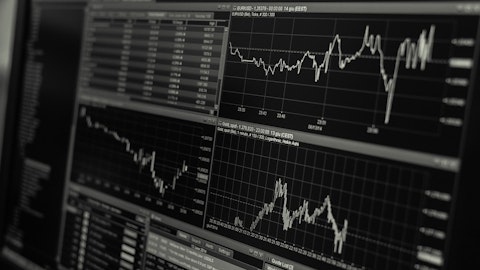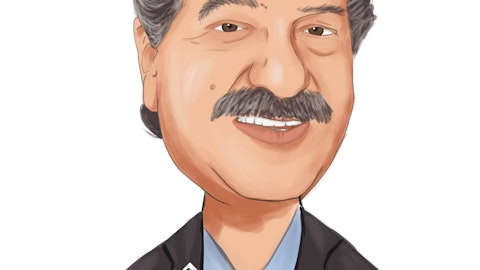And I guess it’s also important to note, 50% of the business is the North American monogastric business, and that actually is performing quite well. That includes our companion animal business and our poultry and swine business. So two issues that we’re focused on, European monogastric and the global ruminant business with global ruminant turning around, we believe, in the near term.
Bob Labick: Okay, super. Thank you so much for that color. And then just was obviously happy to hear you discuss more about raising awareness for choline and your other products. And maybe you could dig in a little bit more about the investment next year you plan on making with ANA. How does it impact the P&L? How do you measure success for it? What should we expect to see out there, if anything?
Ted Harris: Yes. We’re really excited about the broad program of building awareness that we’ve been talking about a little bit, over the last few quarters on the calls. But working very hard behind the scenes. We have a great marketing team that is really helping us drive increased awareness and ultimately increased penetration in the marketplace. The ANA partnership is really only one part of that. But we really think that they are a high-quality nonprofit organization that can help us deliver sort of quality content to consumers maybe like we’ve struggled to do in the past and address that gap that we’ve had in our communication with consumers. But it comes more broadly than just the partnership with ANA. It’s – we talked a little bit about something I’m very excited about is.
These efforts on our part to identify products that aren’t what they are represented to be in the marketplace. And we’ve had some very good success in working with our customers and retailers, and as well as other industry associations to identify these products in the marketplace as essentially counterfeit products, or not having mineral or vitamin or nutrient content that they tend to have. And we’ve been identifying those, bringing those to the attention to the retailers, having them taking off the marketplace. And what that does, is a couple of things for us, it certainly strengthens our value proposition of bringing high-quality trusted products to the marketplace. But also eliminate some of those products from the sales of those retailers and allows our product to shine more brightly, which has been encouraging.
So overall, we’re really pleased with this effort. Ultimately, we’re going to see, from it higher sales. We’re going to be able to talk about higher penetration rates. We ultimately should be able to see it in Nielsen data, around the consumer purchases of our products and those growth rates, and we should be able to report out on those kinds of numbers. In fact, over time, which really is what all of this is about, and what we’re trying to drive.
Bob Labick: Okay. Super. Thanks for that color. I’ll jump back in queue.
Ted Harris: Thanks so much. Bob.
Operator: Thank you. Our next question comes from the line of Tony Polak with Aegis Capital. Please, proceed with your question.
Anthony Polak: Yes. I was wondering if you could go over the interest and other expense item, which significantly increased. Is that mostly for interest from this acquisition? Or is that other expenses also?
Martin Bengtsson: Tony, this is Martin. It’s really driven by the interest expense on the debt. So, if we think about the interest rate environment, we are essentially fully variable from an interest rate perspective. So, we pay a SOFR index rate plus a spread, and that has gone from where were we a year ago, maybe down at 2%, 2.5%, and now there’s an effective rate of 6.5%. So it’s really that change in the interest rate applied to our debt. Now we keep reducing our debt. So, we’re down to $380 million or so of outstanding debt. So we continue to pay that down at a fairly rapid clip. But the increase in the interest rate has more than offset that, and that is really the change in the interest expense.




